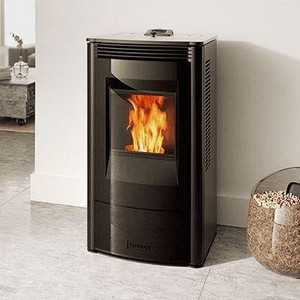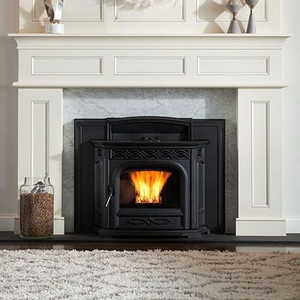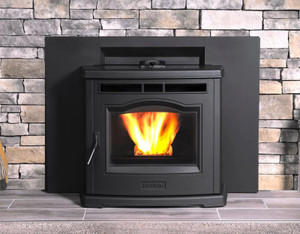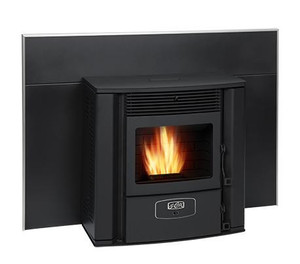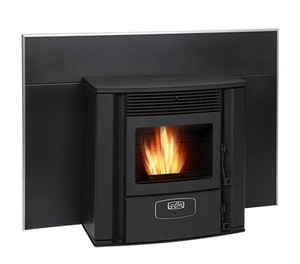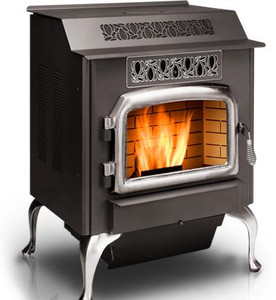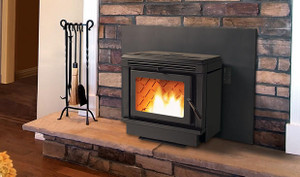
As the demand for sustainable and efficient heating solutions continues to grow, pellet fireplaces have gained popularity among homeowners. Pellet fireplaces offer an eco-friendly alternative to traditional wood-burning fireplaces, providing both warmth and ambiance. In this complete guide, we will explore what pellet fireplaces are, the benefits of using pellets, how they work, and their overall efficiency.
What Is a Pellet Fireplace?
A pellet fireplace (often referred to as a wood pellet fireplace or pellet-burning fireplace) is a modern heating appliance designed to burn small, compressed wood pellets. These pellets are often made from sawdust, wood shavings, or other wood byproducts. This makes them a renewable and sustainable source of fuel. Pellet fireplaces come in various forms and are referred to in a number of ways, including freestanding pellet stoves, pellet stoves, and pellet stove inserts. These variations make them suitable for different heating needs and home setups.
Unlike traditional wood-burning fireplaces, pellet fireplaces are highly automated and efficient. They offer precise temperature control and minimal emissions. They provide the warmth and ambiance of a real fire, without the hassles of traditional wood chopping, stacking, and smoke production.
Are Pellet Fireplaces Efficient?
One of the biggest reasons why homeowners buy pellet fireplaces is their exceptional efficiency. These heating appliances have been engineered to maximize the heat output and minimize waste. This means they’re a cost-effective and eco-friendly choice.
Efficiency in pellet fireplaces is achieved courtesy of several key features:
- Automated Feeding: Pellet fireplaces have automated feeding mechanisms that deliver a consistent supply of wood pellets to the burn chamber. This controlled delivery guarantees a steady and efficient burn rate, avoiding the temperature fluctuations common in traditional wood-burning fireplaces.
- Precise Temperature Control: Pellet fireplaces allow users to set the desired temperature using a thermostat or control panel. This level of control better assures the fireplace operates at its most efficient level, maintaining a comfortable and consistent indoor temperature.
- Minimal Waste: Pellets are tightly compressed, which means they produce very little ash and minimal creosote buildup compared to traditional firewood. This results in easier maintenance and cleaner chimney operation.
- Clean Combustion: Pellet fireplaces use advanced combustion technology to minimize emissions. They have lower particulate matter and greenhouse gas emissions compared to wood-burning fireplaces. This makes them an environmentally responsible choice.
- Zone Heating: Pellet fireplaces can heat specific areas or rooms of your home, allowing you to reduce overall heating costs by concentrating warmth where it is needed most.
Are Pellets Good for Fireplaces?
Wood pellets are the primary fuel source for pellet fireplaces. They provide several advantages over traditional firewood, which means they’re a great choice for both environmental and practical reasons. First of all, wood pellets are a renewable resource, typically made from sawdust, wood shavings, or other wood byproducts. So, they are also a sustainable energy source.
Overall, these pellets burn cleanly due to their low moisture content, leading to efficient and eco-friendly combustion. This results in reduced emissions and less air pollution, making them an environmentally responsible choice.
In terms of convenience, wood pellets are compact and easy to store, available in bags or bulk, and they take up far less space than firewood. So, you’ll enjoy hassle-free storage.
What’s more, pellets are manufactured with consistent quality standards, better assuring reliable performance when used in pellet fireplaces.
Finally, using pellets results in less mess compared to traditional firewood because they produce minimal ash and soot. This reduces the cleanup and maintenance associated with traditional fireplaces.
How Does a Pellet Fireplace Work?
Understanding how a pellet fireplace operates is important to appreciate its efficiency and benefits. The process can be broken down into several key steps:
- Pellet Loading: Wood pellets are loaded into a hopper or storage bin attached to the fireplace. The capacity of the hopper varies depending on the model, with some holding enough pellets for several days of operation.
- Feeding Mechanism: An automated auger or screw system delivers the pellets from the hopper to the burn chamber. The rate at which pellets are fed into the combustion area is controlled by the thermostat or user settings.
- Combustion: The pellets are ignited in the burn chamber using an electric igniter. As they burn, the heat generated is distributed into the room through a fan-driven heat exchanger.
- Exhaust System: The byproducts of combustion (including any remaining ash and smoke) are vented outside through an exhaust pipe or flue. Pellet fireplaces have exhaust fans that help to maintain efficient combustion and minimize emissions.
- Temperature Control: Users can set the desired temperature with a thermostat, allowing the fireplace to adjust pellet feed and combustion rate accordingly. This precise control guarantees consistent and comfortable heating.
- Maintenance: Regular cleaning is needed to remove ash buildup from the burn chamber and the exhaust system. The frequency of maintenance depends on usage and the specific model.
How Efficient Is a Pellet Fireplace?
The efficiency of a pellet fireplace is a definite selling point for homeowners seeking a sustainable and cost-effective heating solution. Pellet fireplaces provide distinct advantages that contribute to their overall efficiency.
First, they excel in energy efficiency, boasting ratings between 70% and 90%. This high efficiency means that a good portion of the heat generated is effectively transferred to your living space. This helps maximize warmth while minimizing fuel consumption.
Besides their energy efficiency, pellet fireplaces are environmentally responsible. Their clean combustion and minimal emissions contribute to reduced air pollution and lower greenhouse gas emissions.
When it comes to cost-effectiveness, pellet fireplaces also rise to the occasion. Their efficiency, combined with the relatively low cost of wood pellets, makes them a cost-effective heating option. Contributing to the reduction of energy waste and lowering of expenses are features like the automated feeding system and precise temperature control.
What’s more, pellet fireplaces are exceptional at zone heating. They let you target specific areas of your home. By heating only the rooms you use the most, you can reduce overall heating costs.
Pellet fireplaces offer an efficient and eco-friendly alternative to traditional wood-burning fireplaces. They provide a reliable and convenient source of heat, with precise temperature control, minimal waste, and low emissions. Whether you're thinking about purchasing a freestanding pellet fireplace, a pellet stove, or a pellet stove insert, these modern heating appliances can heighten the comfort and sustainability of your home. When you're in the market for a new heating solution, it's worth considering pellet fireplaces for their efficiency, cost-effectiveness, and eco-friendly attributes.
To find out more about our pellet fireplaces, feel free to contact us at +1 (800) 969-9592 today.

